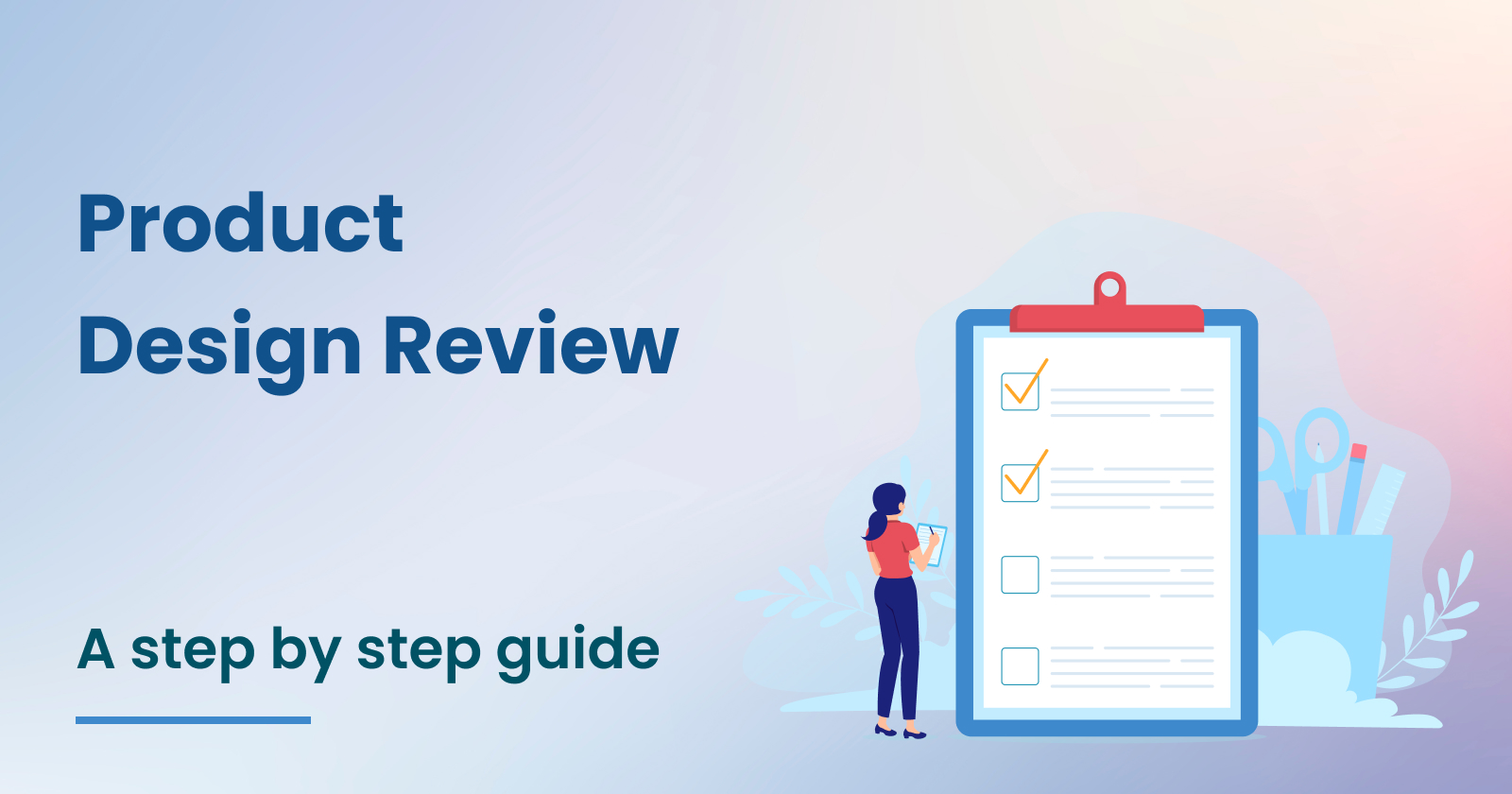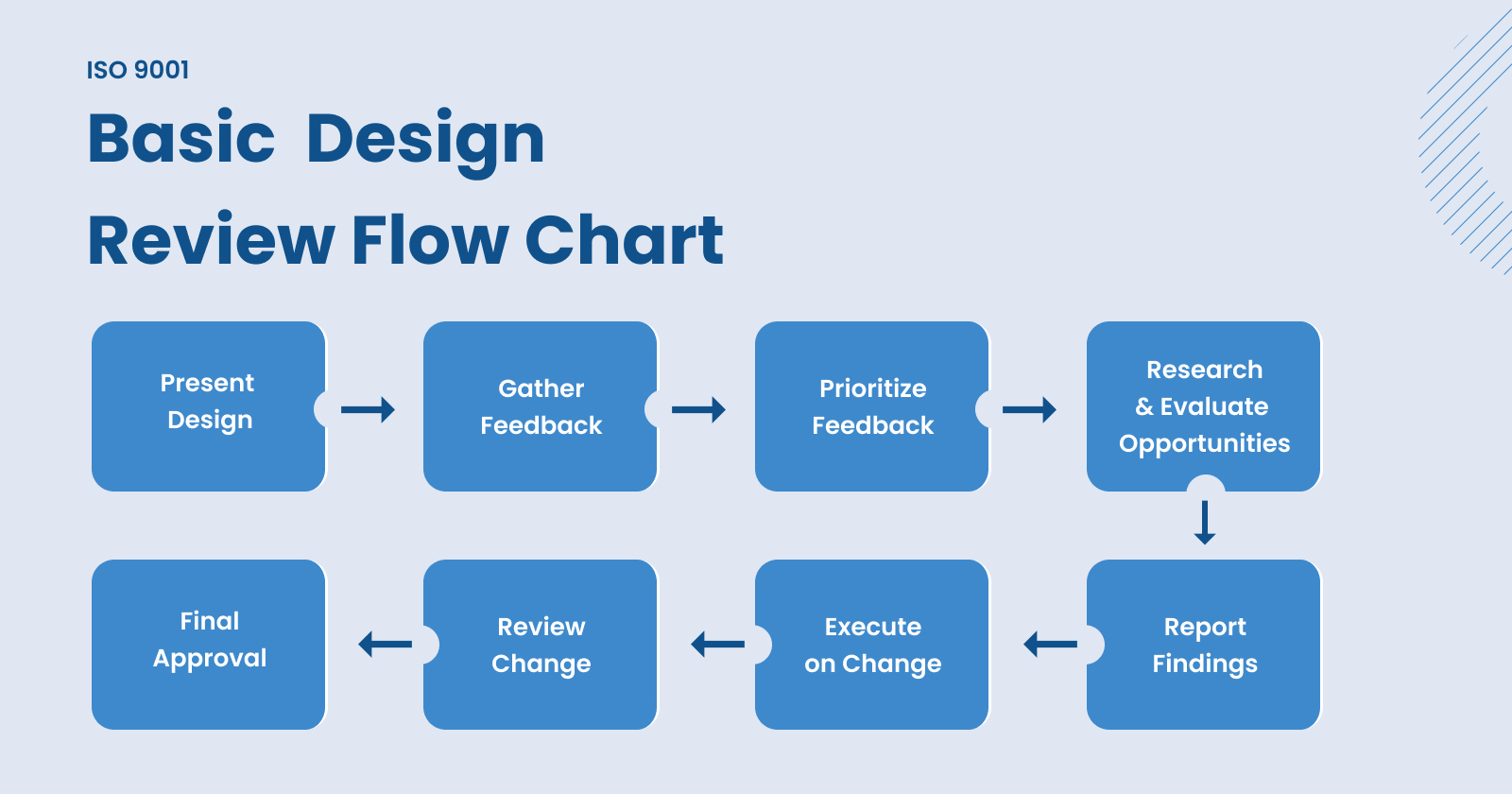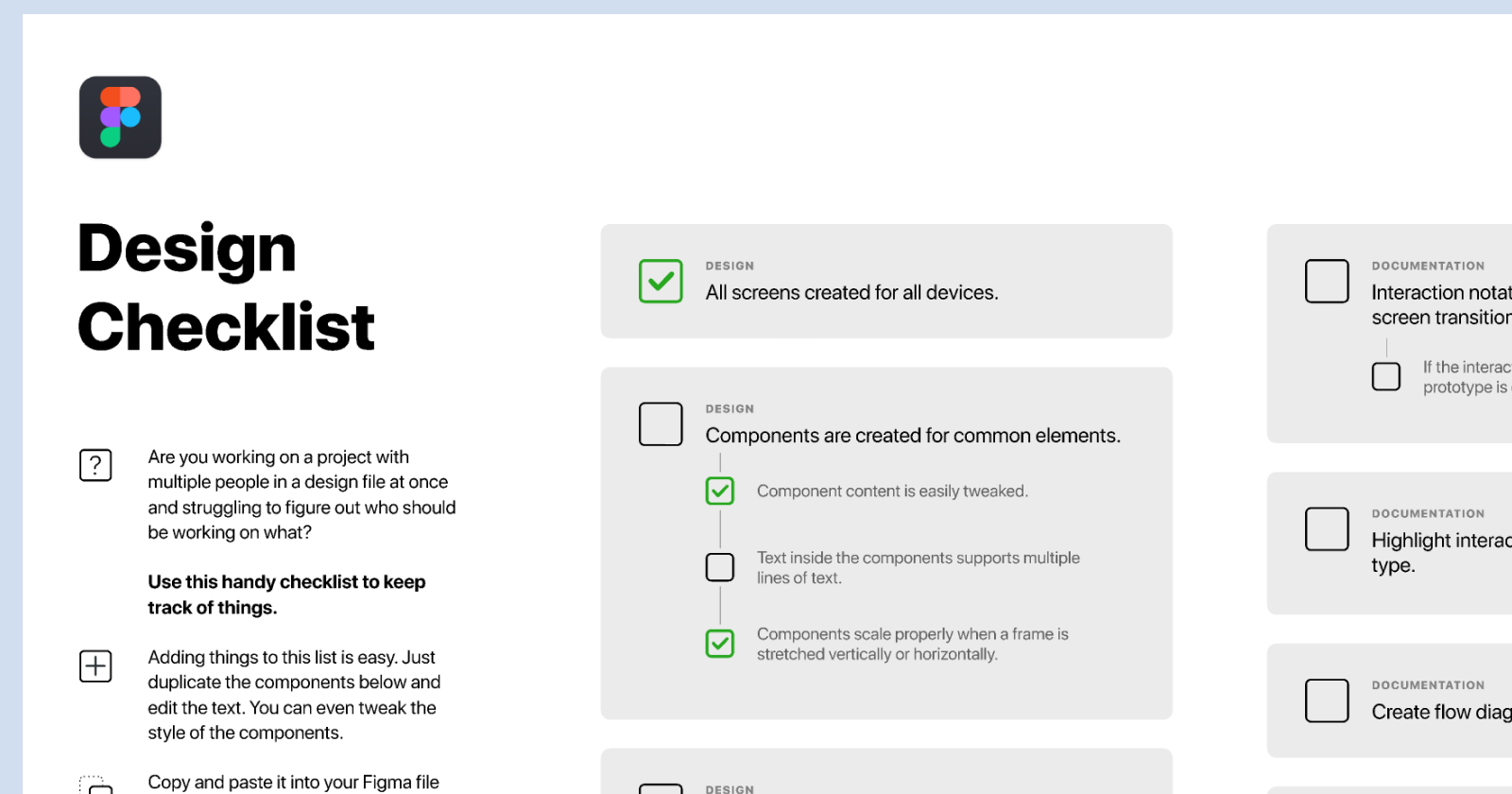Product design review | An effective guide to implement
 Suresh Sapkota
Suresh Sapkota
A product design review is a evaluation process within a product development process where designers, product managers, engineers, and stakeholders evaluate a product against its requirements in order to verify that the design have meet the business requirement with user needs before development. The goal is to ensure that the design is user-friendly, visually consistent, technically feasible, and align with business objectives. During the evaluation, teams evaluate usability, accessibility, user flows, and overall experience to discover areas for improvement early on. This helps to avoid costly development revision later on and guarantees that the final product fits both user needs and business objectives.
A well-structured design review includes a walkthrough of wireframes, prototypes, or mockups, followed by feedback & suggestion from various team members, those are participate in review. It provides an opportunity to evaluate the ideas, refine interactions, and optimize the user experience based on real insights that we have. Product design reviews promote open discussions and organized input, resulting in intuitive, high-quality products that people enjoy while keeping the design and development process efficient.
✨ Key Objectives of a Product Design Review
Validate User-Centered Design
Ensure that the design aligns with the user's needs at each step with focusing of creating useful, usable, and enjoyful solution for the users. UCD design process involved 4 phases, that are:
Context analysis and user research
Specify user requirements
Design solution
Iterative testing and evaluation
Check Business & Product Goals
To ensure that the product design supports key business objectives. While designing the product it should not only be user-friendly but also need to support key metrics like user engagement, conversion rates, or revenue growth. For that we need to define our business goals clearly & need to involve design team early in the process with better communication. That helps to refine the product design on regular basis, before validating the final version with users.
Ensure Technical Feasibility
Identify any potential implementation challenges of a design using current or available technology within the define time, budget and system constraints. Technical feasibility while design review helps to collaborate with engineers to assess whether the design aligns with existing technology, infrastructure, and performance capabilities. Early identifying potential technical & implementation challenges early also helps to avoid costly rework and ensures a smooth risk management.
Improve Usability & Accessibility
Usability ensures that users can navigate and interact with the product to achieve a defined goal effectively, efficiently and satisfactorily, whereas accessibility ensures that people of all abilities can use it effective way. During a design review, make use that the interface is intuitive, easy to use, and free of friction**.** Factors like simple & clean UI, easy navigation, search functionality, findable information, visual hierarchy and responsive design to enhance the overall user experience. Products which are usable, useful, findable, accessible, credible, valuable and desirable are much more likely to succeed in the market place.
Maintain Visual & Brand Consistency
Visual branding is the visual representation of a brand to create your unique identity to gain the trust of your clients and serving as a differentiating yourself from competitors. It includes elements such as logos, typography, color palettes, illustration elements, and design system. With a brand consistency we can create harmonious brand voice throughout all marketing channels like, websites, emails, social media platforms, brochures, posters – everything your potential customers see and interact.
Optimize Performance & Scalability
Performance and scalability are critical for providing a smooth, efficient user experience as the product grows. During design review we need a discussion, if the design is efficient and adaptable for future updates. When creating layouts, components, and workflows, scalability should be taken into account to make sure they can accommodate growing user traffic, bigger datasets, and new features.
Ask: Will this design operate effortlessly with more users? Can additional elements be introduced without disturbing the experience?
✅ Design Review Process
A design review is a formal evaluation process where teams collaborate to ensure that the design is user-friendly, technically feasible, and aligned with business goals before implementation phase. Design reviews are crucial because they serve as a quality control in product design, by helping the project is on on right track and aligned with its primary goals.

There is no accurate design review process, since review process differ from organization and product design teams. Every design team have their own design review process. Here are few steps that you can implement in your organization design review process;
Step 1: Preparing for the Design Review
This initial step ensures the design review process is focused on team objectives, avoids confusion, and makes the review process more productive. During this phase, it is important to organize all the necessary details such as the project/feature title, objectives, participants list and date & time. Some of the main considerations during this step are:
Define the review objectives
Are we validating the design against requirements, discussion for potential issues or gathering stakeholder/ business team feedback.
What specific questions or concerns need to be addressed in design?
What are we evaluating? (Usability, accessibility, technical feasibility, etc.)
Are we focusing on early wireframes, high-fidelity design, or interactive prototypes?
Preparing & organize design assets
Prepare all wireframes, UI & components, user flows, or interactive prototypes.
Include design artifacts like user research insights, personas, and problem statements for context, so so that the review can proceed smoothly.
Provide clear Context
Summarize the user needs, business goals, and design logic
Define or present any technical constraints or design system guidelines that must be followed.
Set the review meeting & invite the right team members
Keep the meeting structured and time-bound (30–45 minutes max). But the time can be extended on the nature of review
Ensure key cross-team stakeholders are present: product managers, designers, engineers, and relevant team members. If needed(we can also invite business & marketing team)
Assign a facilitator to guide the design, discussions and keep things focused while review session
Step 2: Design Review Session
A design review session is an organized meeting in which designers, product managers, engineers, and stakeholders analyze a design, provide input/feedback, and decide for the next steps. The purpose is to detect possible issues early on, establish alignment with user needs and company goals, and optimize the design for developer hand-off. Some of the main considerations during this step are:

References figma template , Confluence design review template for design review checklist
Brief the context and introduce the design
Share the design link through a collaborative platform like Figma, Miro, or Notion.
Start by briefing the design outline and its purpose.
Provide clear context about the user personas, user needs, and business goals that have been addresses by the design
Explain the design decisions and the logic behind the solution
Discuss with technical constraints or dependencies that could affect the design.
Walkthrough of the Design
Share the design link through a collaborative platform like Figma, Miro, or Notion.
Start by briefing the design outline and its purpose.
Provide clear context about the user personas, user needs, and business goals that have been addresses by the design
Explain the design decisions and the logic behind the solution
Discuss with technical constraints or dependencies that could affect the design.
Facilitate feedback discussion
Allow time for stakeholders to ask questions and provide feedback.
Distinguish feedback into structured categories, so it will easy to work on (e.g., usability, aesthetic consistency, technical feasibility, accessibility, etc.).
Encourage participate for providing constructive & actionable feedback (feedback should be clear, specific, and align to user goals or business objectives).
Prioritize collected issues for actionable changes
Review all the collected feedback and identify critical issues that require quick solutions.
Prioritize changes based on their impact
Clearly outline action items & define who is responsible and when
Summarize & set for the next steps
Summarize the main feedback points and decisions reached during the session.
Talk about the next design iteration steps and, if necessary, set up any follow-up meetings.
Assign task to the product managers, engineers, and designers that need to be changes
Step 3: Post Design Review Actions
After a design review session, it's important to maintain a feedback documentation on priority basis and ensure proper execution for next steps. Effective follow-up facilitates collaboration, keep the design on schedule and also helps to convert feedback into possible improvements.
Maintain document for feedback & key decisions
Document all provided insightful feedback, discussion and decision from the review session
Prioritize the next stage by separating the main design issues from the minor enhancement
Iteration & feedback implementation
Work together with engineers to resolve issues related to technical viability.
Based on feedback that is prioritized, designers make adjustments to the design.
If required do usability testing before completing the final adjustments.
Schedule a follow-up design review (if needed)
After iteration & new changes, if major revisions were required, schedule another review session with team
Ensure all stakeholders have access to new version of design to validate the final changes before development begins.
Verify the latest version and confirm that the design is ready for handoff to developers.
Maintain feedback log & design consistency
Maintain a record of each iteration design decisions or feedback to ensure consistency across teams.
Update design system components & style guide, if new introduced component can impact the overall design
Maintain proper version of design in figma or in sheet (having version number and design link)
📋 Key benefits of design review
After a design review session, it's important to maintain a feedback documentation on priority basis and ensure proper execution for next steps. Effective follow-up facilitates collaboration, keep the design on schedule and also helps to convert feedback into possible improvements.
Improves User Experience & Usability
Ensures user-friendliness: Design reviews guarantee that the product is intuitive and simple to use.
Meets audience needs: Reviews make sure the design satisfies the needs and expectations of the target audience.
Refines usability: Feedback from a range of viewpoints aids in optimizing the design's usability.
Improves design quality: A more effective and efficient user experience is produced by incorporating different points of view.
Reduces cost for revisions & rework
Saves time and resources: Delays and unnecessary costs can be avoided by identifying design flaws early.
Prevents rework: By identifying issues early on in the development process, expensive changes are avoided later.
Reduces development costs: The time and cost required to fix mistakes made during or after development are reduced by early defect detection.
Speeds up the process: The team can stay on course and proceed more effectively with early detection.
Aligns Teams & Improves Collaboration
Aligns teams: Design reviews guarantee that stakeholders, engineers, product managers, and designers are all in agreement.
Promotes collaboration: All important people are encouraged to collaborate and contribute during the evaluation process.
Facilitates clear communication: Ensure clear and efficient team communication.
Aligns product vision with business goals: Makes certain that the design is in line with the overarching goals and strategy of the company.

Meme source: https://makesaasbetter.com/teamwork-memes/
Encourages Innovation & product quality
Encourages brainstorming: Reviews offer a chance to produce and hone original ideas.
Promotes constructive feedback: Feedback during design reviews helps improve and strengthen design concepts.
Fosters innovation: More creative and practical design solutions are frequently the result of constructive criticism.
Results in higher-quality products: More careful designs result from the review process, raising the caliber of the finished product.
Ensures Consistency & brand alignment
Maintains visual consistency: Consistent design aspects throughout the product are ensured via routine design evaluations.
Ensures functional consistency: Reviews aid in maintaining consistent functioning and user interactions across the product.
Enhances brand identity: Consistent design increases brand recognition and strengthens the product's brand.
📝 Summary
Designers, product managers, engineers, and stakeholders assess a product before it is produced to ensure that it meets business and user goals. This process is known as a product design review. Verifying that the design is technically possible, aesthetically consistent, user-friendly, and in line with corporate goals is the aim. The team focuses on usability, accessibility, user flows, and the entire experience during this assessment in order to spot possible areas for improvement early on and prevent later, expensive updates.
organized design review, after which all team members provide comments and suggestions. Based on actual insights, this method offers the chance to assess concepts, improve user interactions, and maximize the user experience. Design reviews maintain an effective design and development process while promoting organized input and candid conversations, which results in the creation of high-quality, user-friendly products. Design reviews, as a structured assessment procedure, serve as quality control by guaranteeing that the project remains on course and is in line with its main objectives prior to the implementation stage.
🙏 Thanks for reading the post, you are welcome to comment & leave feedback 🙂🙂🙂
Subscribe to my newsletter
Read articles from Suresh Sapkota directly inside your inbox. Subscribe to the newsletter, and don't miss out.
Written by

Suresh Sapkota
Suresh Sapkota
Hi, I am a Nepal based product designer. Currently working in JoBins as a UX/UI Designer. Having experience of working with enterprise clients around the world since 2019. Love to read books, writing blogs & travel in free time. 🇳🇵🙂🎨